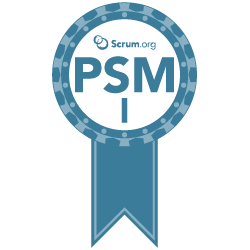The Scrum Team has become quite experienced, their productivity is high, they can decide to do Daily Scrums just twice a week.
- True (false)
- False (correct answer)
One person can be a Scrum Master in 2 Scrum Teams developing 2 products?
- True (correct answer)
- False (wrong)
The Scrum Master and the Product Owner can be the same person.
- True (correct answer)
- False (wrong)
He can, altough it’s not recommended because of possible conflict of interests.
What is the designer responsible for?
- There is no such a role in Scrum. (Correct answer)
- Designing the Product. (false)
What should NOT happen during a Sprint?
- Changes to the Product Backlog (false)
- Changes to the Sprint Backlog (false)
- A decrease in quality goals (correct answer).
- Changes that would endanger the Sprint Goal (correct answer).
Who attends the Sprint Planning event?
- The entire Scrum Team (correct answer)
- The PO and SM (false)
- The PO and the Developers (false)
- The Developers and Project Manager (false)
Who defines the Sprint Goal?
- The Product Owner (false)
- The whole Scrum Team (correct answer)
- The SM and the PO (false)
- The PO and the Developers. (false)
When is the Sprint Goal created?
- During Sprint Review (false)
- During Sprint Retrospective (false)
- During Sprint Planning (correct answer)
- It’s not mandatory to have a Sprint Goal (false)
Who determines how many items to select for the Sprint Backlog?
- The Product Owner (false)
- The SM (false)
- The Developers (correct answer)
- The Customer (false)
- The Team Leader (false)
Can people outside the Scrum Team attend the Sprint Planning event?
- True (correct answer)
- False (false answer)
What is the duration of the Daily Scrum Event?
- 10 minutes (false)
- The SM and Developers decide what the duration should be (false)
- 15 mins for a 2-week Sprint and 30 mins for a 1-month Sprint (false)
- 15 minutes (correct answer)
The Daily Scrum event is held at the same time and place every working day of the Sprint.
- True (correct answer)
- False (wrong)
During the Daily Scrum the Scrum Master removes impediments?
- True (wrong)
- False (correct answer)
The Developers can discuss and adjust their plan for the Sprint outside the Daily Scrum event?
- True (correct answer)
- False (wrong)
Which of the options below are Scrum Pillars?
- Transparency (correct answer)
- Opennes (false)
- Inspection (correct answer)
- Focus (false)
- Courage (false)
How long should the Daily Scrum be if 9 developers are working on a project and the Sprint length is 2 weeks?
- 30 mintues (false)
- 15 minutes (correct answer)
- 45 minutes (false)
- As long as the Scrum Master decides (false)
If the Scrum Team is mature enough, they do not need Sprint Retrospective anymore.
- true (wrong)
- false (correct answer)
Read More
